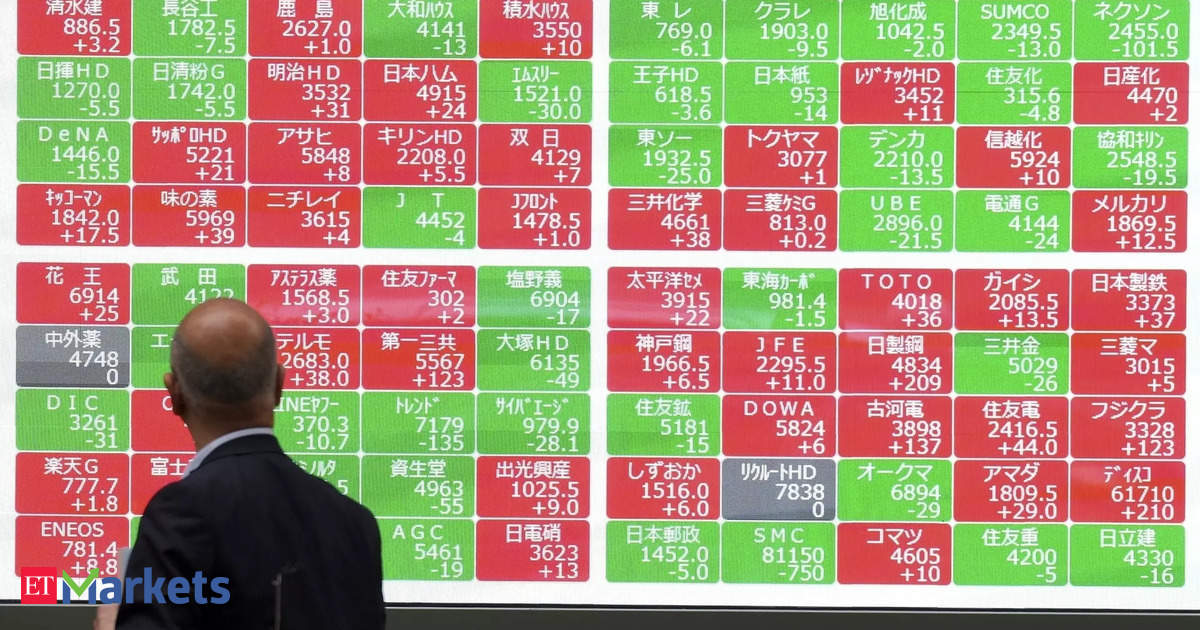Regional equities had started the day by tracking Wall Street’s overnight rise to record highs, with investors digesting the Federal Reserve’s message for careful interest rate cuts even with expectations for big fiscal spending under incoming President Donald Trump.
U.S. Treasury yields pushed to new lows in Asian hours, keeping the dollar under pressure after its biggest decline versus major peers in more than six weeks on Thursday.
An MSCI gauge of Asia-Pacific stocks was up 0.33% as of 0552 GMT, after earlier rising as much as 0.78%.
The index remained on track for a 2.7% rally this week, after quickly recovering from a knee-jerk dip on U.S. election night, which spurred worries of debilitating trade tariffs, not least in China.
Optimism for a stimulus response from Beijing kept Chinese stocks buoyed over the course of the week, including a 3% rally for mainland blue chips on Thursday. Blue chips were last down 0.5%, reversing gains of as much as 1.3% from earlier. Hong Kong’s Hang Seng declined 0.6%. The National People’s Congress Standing Committee meeting concludes on Friday with officials due to hold a briefing. Sources previously told Reuters that Chinese fiscal spending could be increased in the event of a second Trump presidency.
However, DBS’s China economist Tao Wang doesn’t expect the announcement of a full stimulus package at the briefing, as Chinese leaders need time to assess the timing and impact of any U.S. policies on the country, according to a client note.
DBS’s China equity strategist James Wang said Chinese stocks are “skewed to the downside in the near term, and the market is not fully pricing in a 60% tariff implication”, the note said.
Japan’s Nikkei added 0.6%, up 4.1% for the week.
Australia’s stock benchmark climbed 0.8%, and Taiwan’s benchmark gained 0.6%. South Korea’s Kospi slipped 0.2%.
Futures for Britain’s FTSE and Germany’s DAX were each up about 0.2%. The FTSE lost 0.32% on Thursday after the Bank of England signalled the risk of higher inflation.
Global stocks, led by Wall Street, are on course for a 3.3% weekly advance, and stand at a record high.
Trump swept back to the White House on Tuesday with Republicans taking back the Senate and potentially increasing their House majority, although votes are still being counted. The outcome defied polls that predicted a neck-and-neck race with Democrat Kamala Harris.
Investor expectations that Trump would lower corporate taxes and loosen regulations sent all three major Wall Street indexes to record peaks on Wednesday, and the S&P 500 and Nasdaq extended those highs on Thursday, with Fed Chair Jerome Powell signalling continued, patient policy easing. The Dow ended flat.
Powell said Tuesday’s election, which will put in the White House a president who has pledged widespread deportation of immigrants, broad-based tariffs and tax cuts, would have no “near-term” impact on U.S. monetary policy.
U.S. two-year Treasury yields, which are highly sensitive to monetary policy expectations, edged down to 4.2016% on Friday, compared with a more than three-month high of 4.3120% on Wednesday.
The dollar index, which measures the currency against six major peers, ticked up slightly to 104.53, but that followed a 0.7% drop on Thursday, its biggest since Aug. 23. On Wednesday, it soared 1.53%, the most in over two years.
“Markets have already gone through the ‘honeymoon period’ for the president-elect, and USD and U.S. rates now are in the ‘window period’, when they consider the policy outlook,” said Shoki Omori, chief Japan desk strategist at Mizuho Securities.
“The key is whether the president-elect and his team want more fiscal issuance next year,” and market participants will again need to be alert for potentially market-moving posts from Trump on social media, Omori said.
Bitcoin was flat at around $76,000, following a nearly 10% surge this week, hitting a record peak of $76,980 on Thursday. Trump has vowed to make the United States “the crypto capital of the planet”.
Gold struggled to make any additional headway following its rollercoaster week, easing 0.6% to $2,691 in the latest session. It slumped more than 3% on Wednesday, but bounced 1.8% overnight. Last week it surged to an all-time high of $2,790.15.
Oil prices declined on Friday, following gains of about 1% overnight as the market weighed how Trump’s policies would affect supplies and as drillers cut output while bracing for Hurricane Rafael.
Brent crude oil futures were last down 0.53% at $75.23 a barrel, while U.S. West Texas Intermediate (WTI) crude eased 0.65% to $71.89.


